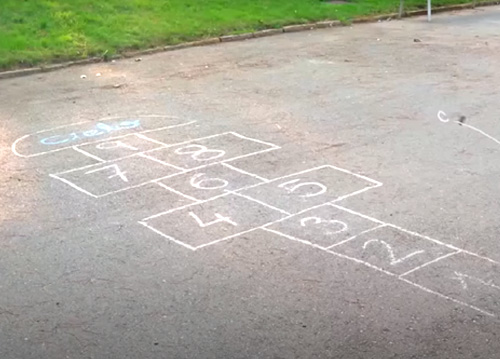Info
To start the game, a draw is made as to which player starts the game.
At the start, the china is thrown on square one. The game is played as usual, but if the boundary lines are touched, the turn is lost and passes to the opposing player.
If the china does not land on the corresponding square, the turn is also lost.
Each player may roll as many times as she can, as long as the china does not step on or off the boundary line.
When the turn is lost and then played again, because a whole round of players has already passed, the game starts from where it left off.
To start, the china is thrown on square one and the player jumps on one foot without stepping on the square with the stone. When you reach the squares divided by two numbers, you put one foot on each one simultaneously. When you reach the last square, also depending on the zones, the game ends in some areas and continues in others.
History
It is believed that this game was developed in Renaissance Europe and that the theme is based on Dante Alighieri's book The Divine Comedy, in which the character, when he leaves Purgatory and wants to reach Paradise, has to go through a series of nine worlds until he reaches it.
The player acts as a counter. He has to jump from square to square, on one leg, pushing the stone that was supposed to represent his soul. He set off from Earth to reach Heaven (Uranus), taking care not to fall into the pit or Hell (Pluto) on his journey. In no case was the stone to stand on a line, since, from Earth to Heaven, there are no borders or demarcation zones, no separations, no rest, and there are also cases where the stone or the object you throw can be moved with your foot.
Physical abilities developed
Vision-motor -coordination, agility, balance, jumping



